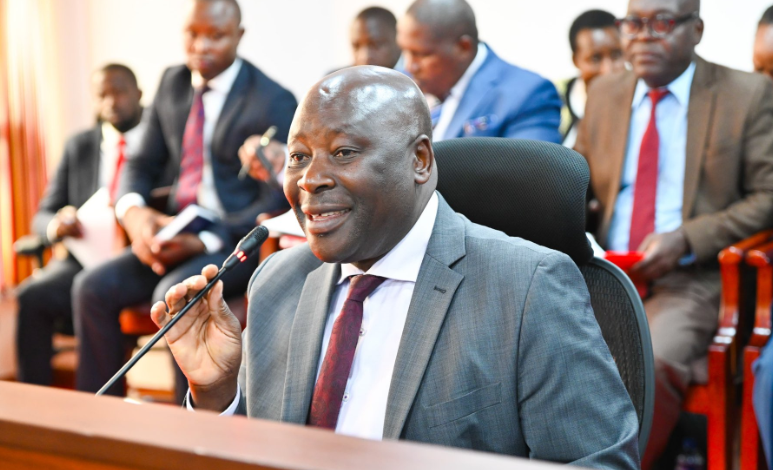Initiative aims to create jobs for Kenyan youth, grow trees

A tree-planting initiative aimed at tackling climate change and creating youth employment has been launched.
The initiative by Multi Touch International (MTI) targets to plant 40 billion ecologically suitable trees, including indigenous, exotic, fruit, and medicinal species, while offering unemployed youth green jobs and a stake in environmental conservation.
According to the Kenya National Bureau of Statistics (KNBS), youth unemployment averaged 8.91 per cent between 1991 and 2023, peaking at an alarming 12.2 per cent.
“Time is ripe for action that addresses both ecological restoration and economic empowerment. The world is alive to the urgency of mitigating climate change, and guided by science, we at MTI are unanimous that all able Kenyans must take responsibility by rolling up their sleeves and planting trees before it’s too late,” said MTI’s Executive Director, Christine Wangari.
According to her, the ambitious project will create thousands of job opportunities as well as sequester over one billion tonnes of carbon annually, contributing significantly to Kenya’s climate change mitigation efforts.
Under the model, each youth participant will be tasked with raising 40,000 seedlings annually and will earn a monthly salary ranging between Sh15,000 and Sh17,000.
Those engaged in farming on plots as small as one acre will raise 20,000 seedlings per year and earn between Sh10,000 and Sh12,000 per month.
Meanwhile, youth with professional qualifications, holders of diplomas, certificates, or degrees, will earn upwards of Sh18,000 for supervisory and management roles.
The planted seedlings will be nurtured for a minimum of four years, ensuring long-term care and monitoring.
Promoting agroforestry
“This 24-hour tree-planting model is not only expected to create jobs, but also contribute to carbon credit markets, turning environmental action into economic gain. Carbon sales are projected to inject new revenue streams into Kenya’s economy, positioning the country as a leader in climate-driven economic transformation,” Wangari added.
According to her, environmental conservation activities, if well tapped, would create decent jobs for the youth, especially in rural areas and increase food production, thereby contributing to effectively achieving Sustainable Development Goal 1(No Poverty) and SDG 2 (Zero Hunger) by 2030.
The project will utilise land owned by national and county governments, schools, farms, ranches, and trust lands, ensuring that idle land is turned into productive, green zones.
Agroforestry will also be promoted, with project beneficiaries, primarily youth and women, allowed to grow crops alongside the trees.
These crops will be pre-marketed, and earnings will be distributed after deducting basic farming costs like ploughing.
The initiative will be supervised by seasoned agronomists, hydrologists, dam construction experts, foresters, surveyors, accountants, irrigation experts, marketers and drivers, all geared towards enhancing individual sectors’ viability besides diverse job creation.
“We at MTI believe that this concept is paramount towards activating and solidifying the adoption and implementation of sustainable homegrown solutions to effectively address spiralling economic crises,” she added.
To ensure its success, MTI is partnering with various government ministries, including those of the Environment, Agriculture, Education, Lands, and Tourism.
There are also various corporations, development partners, and the wider public are encouraged to purchase low-cost seedlings from MTI’s nurseries, which will be planted and maintained by MTI teams at designated sites.
Restoring forests
Apart from that the organisation is also asking the government to consider offering or leasing idle government land to them because this would boost the government plans to plant 15 billion trees by 2032, a programme aimed at reaching 30 per cent of tree cover to restore and conserve Kenya’s 10.6 million hectares of degraded landscapes and ecosystems.
“This is not just a local initiative but a project of global magnitude. It aims to counter challenges such as illegal migration, youth unemployment, human trafficking, poverty, food and water insecurity, and the worsening climate crisis. This is our chance to lay a foundation for reversing the damage caused by extreme weather events, deforestation, and rising inequality,” she noted.
Kenya loses about 12,000 of its 4.6 million hectares of forest land every year due to a combination of rising demand for wood fuel and charcoal, a growing population, the spread of infrastructure and the conversion of forests into commercial farm land.
This is despite the fact that around four to five million Kenyans benefit directly from forests. Forests also provide a host of benefits that have not been marketed, for example, biodiversity, carbon sequestration and slower land degradation.
Three-quarters of Kenya’s renewable water surface comes from forested land
With less than six years remaining to limit global warming to 1.5 degrees Celsius, as warned by the United Nations, support for the initiative is already taking shape.
In Nakuru, a 10-acre tree nursery site has been donated for a three-year period, while the county governments of Tana River and Kilifi have collectively allocated 50 acres to support the project’s rollout.









